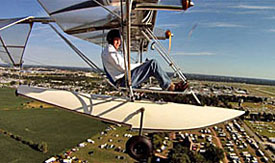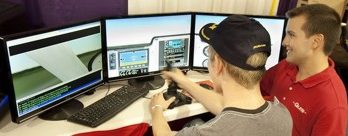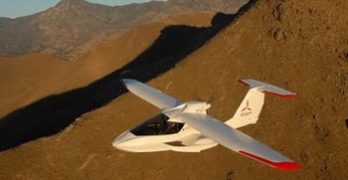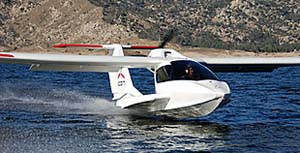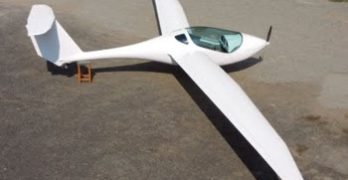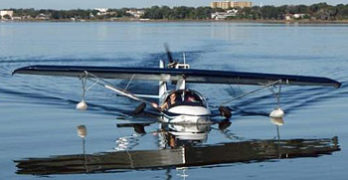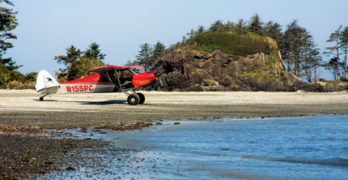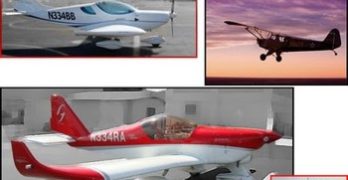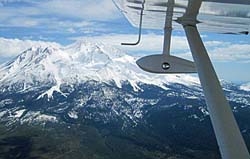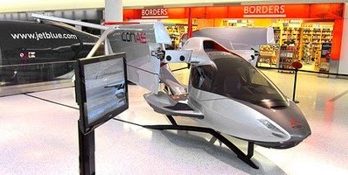Oshkosh 2011 is history. By numerous accounts, this was a vast improvement over 2010 when the comments commonly went, “Well, I had some interest (in my airplane) and I hope to sell one or two… maybe.” This year I had easily 30 conversations revealing either outright positive successful results or varyingly robust mood indicators such as, “Looks like aviation has life in it again.” I heard from sellers and customers and rarely had to solicit their opinions. *** A number of aircraft purveyors said they took cash deposits and wrote firm contracts. I estimate about 30 aircraft sales by this method. Companies like Icon, Flight Design, and Terrafugia sold a large number of future delivery positions (more than 50, more than 60, and “several,” respectively). *** Icon neared or crossed the 500-on-order point, partly by “testing elasticity” in the pre-order market by lowering the A5 seaplane deposit to $2,000 from $5,000.
Search Results for : A5
Not finding exactly what you expected? Try our advanced search option.
Select a manufacturer to go straight to all our content about that manufacturer.
Select an aircraft model to go straight to all our content about that model.
SplashKash 2011
Today was not a typical Oshkosh day, and certainly nothing like yesterday, which was downright idyllic with its sunny skies, refreshing mid-70s temps and puffy clouds to complete the chromatic joys of a perfect green summer day in Great Lakes country. *** In short, it rained until late afternoon, but by sundown the skies mostly cleared with the promise of hotter, more humid days ahead. Today was the perfect kind of day to walk around, dodge the liquid sunshine, meet and greet old friends and make new ones, and see what’s shaking in the main display hangars and booths strewn all over Airventure. *** I’d wanted to check out the Gleim X-Plane VFR Flight Simulator I’ve heard so much about. I had the benefit of a stirring presentation by Aaron Wiseman, who energetically took me through all the main features of the system which has caught on at a number of flight schools already.
Of Amphibs and Aircars
Two of the best-promoted and most interesting LSA projects – and two of the most delayed getting to market – are back in the news. Icon Aircraft, a startup company created to produce the sexy composite A5 amphibian, just snagged $25 million in funding to help complete remaining design issues, tool up for production and begin cranking out airplanes. *** The company reports around 500 A5 orders on the books, at $139,000 per. A few months of flight testing remain to be completed, along with a new wing (reportedly for better spin resistance and directional stability), which means the production target date has been pushed back again, this time to the last quarter of 2012. *** Reported among the new crop of investors are Eric Schmidt of Google, Satyen Patel, formerly of Nike and Phil Condit, former CEO of Boeing, and some “undisclosed” Silicon Valley entrepreneurs. The initial infusion of greenbacks will be $15 million, with an option for $10 million more.
What Does It Take to Develop a SLSA? $25+ Million?
Most of the 118 Special Light-Sport Aircraft have been developed on a very modest budget… not that there’s anything wrong with that, of course. By far, the highest figure I’ve heard was about $2 million to create a new SLSA model. Yet that number doesn’t include starting a company from scratch and going all the way through to a new production facility with airplanes ready to fly away. So, what’s the total investment? Well, that depends on a thousand variables. It can be done quite inexpensively. Or, you can shoot for the moon. *** “Icon Aircraft recently closed a $25 million round of U.S. and U.K. venture financing from several high-profile consumer-product and aviation investors,” the company announced today. “The [money] takes Icon through the completion of the A5 development program and into the production phase.” *** So, one thing seems certain. Before gaining SLSA status or building a single production airplane, Icon is already the LSA market leader… in fund raising.
Electric Race Update: CAFE-Bound!
Picking up my electric aircraft coverage again with an email from Phoenix Air USA kingpin Jim Lee with the latest updates on the PhoEnix electric motorglider NASA/CAFE race entry, which just came out of the paint shop and has all its pretty parts put together…and a beautimous bird she is indeed.”We put the PhoEnix together,” Jim tells me, “my last day in Czech so we could finally see what it looks like. Man am I excited now! I can’t believe that I will be the one to fly such an amazing ship.” Color me green with envy. *** Jim’s deep and broad soaring background should stand him in good stead tweaking every last ounce of performance from the gorgeous, one-off soaring bird. *** He’s also got a few more details on his Phoenix blog. Here are some highlights: *** Conceived for the NASA CAFE Green Flight Challenge… “A race that offers big bucks for the winner ($1.65 million total), but with a bar set so high that it is unlikely that anyone will win it.
SeaRey Sales Prove Popularity of Amphibians
Progressive Aerodyne and their popular SeaRey amphibian represent a current-day success sufficient to generate envy in most airframe sellers. Consider these results: Searey delivered 31 kits in 2010, an average 2.5 per month during a lousy year. Plus, in just three weeks since Sebring another 14 SeaRey kits have been ordered, upping the monthly average to 4.0. True those SeaReys are Experimental Amateur Built (EAB) kit models and so don’t compare directly with SLSA sales. *** In less than three years, company spokesman and sales director Darrell Lynds (formerly with SportairUSA) took the company from one kit a month to its current pace, along the way building a list of 1,700 very interested potential buyers. He says his 2011 orders are cash-in-hand and projects a solid year for the amphibious seaplane producer. This adds to a remarkably loyal following of 600 SeaRey aircraft builders. How can the central Florida manufacturer be doing so well?
Best LSA Picks of 2010
More than 20 Top LSA You Can Buy
The light-sport aircraft industry hangs in there, although sales numbers, as with general aviation, still struggle to gain safe altitude in the stormy economic skies. Encouraging item: LSA sales in 2009 represented nearly 25% of all GA piston purchases. Another surprise: Most of the 107 models available for sale here and abroad are still in production with more new models in the pipeline! Nobody’s getting rich (this is aviation, remember?), but most makers believe the turnaround will come. That’s the spirit!
And with the Euro taking heat against the dollar lately as Europe goes through its own econoclysm, U.S. prices for foreign-produced LSA could drop. Many airframe makers lowered prices, but the industry still faces challenges: ongoing dyspepsia imbued by the sluggish recovery; market recognition… many people still aren’t aware of what an LSA is, maybe that’s why 20% of all U.S. sales in the U.S.
So Cal Flyin’
For all you LSA California Dreamers out there, one of the oldest LSA schools in the southwest is worth a closer look.*** San Diego Sport Flyers has been rolling the LSA dice for more than two years now and reports it has grown to 50 members and claims to get “several calls per day pertaining to the Sport Pilot license.” *** AOPA recently praised the LSA school for its “right stuff” — and that was an unsolicited rave. *** The school just added a Legend Cub to the fleet and plans to bring on the Icon A5 once it’s through testing and development, too, sometime next year. *** Already online are the Gobosh 700, SportCruiser and Sting Sport shown. *** Tom Ellery, President of the operation, told Plane & Pilot editor Jessica Ambats recently that two high school students just got their Sport Pilot tickets and a 70-year-old student will solo soon.
SeaMax Illustrates a Point About Niche LSA
One of the oft-repeated questions about this new thing called Light-Sport Aircraft is: “When will the shakeout occur? When will some of these 75 companies [who certified a SLSA] disappear… and which ones will fail?” *** First, my ability to see the future is no better than anyone else. We’ve lost a few suppliers (Taylorcraft, Urban Air, Spain’s CAG, Higher Class). But as a longtime observer of many sport aviation segments, here’s my view: (1) The current market leaders — the top dozen or so — will likely remain as they’ve already proven themselves. Remember, many overseas brands have world markets so they don’t rely 100% on U.S. sales. And should they fail, it will most likely be due to business practices, not their aircraft design. A few newcomers will enter the top ranks, including such legacy brands as Cessna (which has presently delivered so few Skycatchers that the giant manufacturer is not yet in the Top 20).
ICONographic Marketing
I thought I’d share a couple interesting videos recently posted on the Icon Aircraft website. There’s a multimedia gallery of high-profile, appealing eye candy, including YouTube videos chronicling various aspects of the ongoing test program for the company’s A5 amphibian S-LSA. *** Two I found particularly interesting: a stall sequence and a potpourri of recent flight test ops. *** First, the stall sequence shows the classic tufted airflow indicators taped to the wing to demonstrate inflight stall progression from the root outward. *** Watch the tufts near the root begin to wiggle and change direction first, demonstrating loss of lift. Then see the stall move outward from the root and along the trailing edge. To my eye, it seems like the middle of the wing completely stalls before the root. I’d like to know about the aerodynamic significance of that, and why the wing doesn’t stall more classically at the root first.


